Equity-focused interventions to increase colorectal cancer screening
- Downloads
- Full report (pdf)
The current state of colorectal cancer screening in Canada
Every jurisdiction has organized colorectal screening programs except for the Northwest Territories, Nunavut and Québec (which are in the process of planning or implementing them). The screening participation rate across the country is still below the national target of 60%. However, many programs have just been recently implemented and are already seeing increased participation rates. Now, to achieve maximum impact, screening programs can further engage with communities and meet the needs of all populations.
Participation rates
Participation rate is the percentage of the eligible population who successfully completed a fecal test in an organized cancer screening program within a two-year period.

Data source: Statistics Canada, Canadian Community Health Survey, 2017
Up-to-dateness rates
Up-to-dateness colorectal screening rates reflect the population who self-reported having had a fecal test in the past 2 years, or a colonoscopy or flexible sigmoidoscopy in the past 10 years. Read the definition of “up to dateness” and other key terms on our Definitions page.
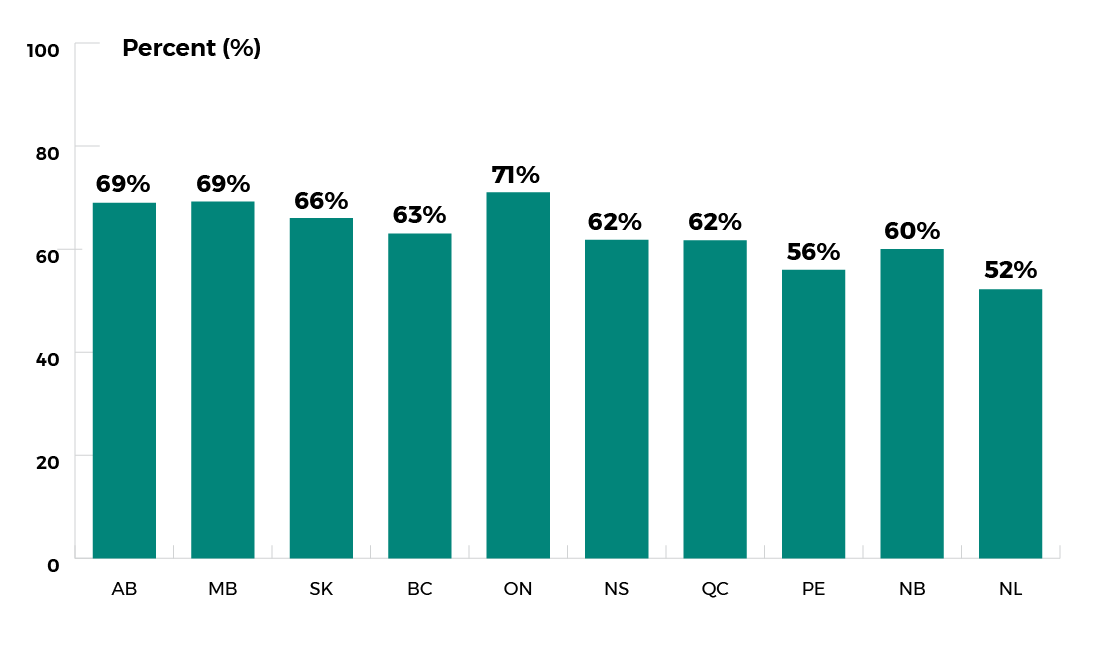
Data source: Statistics Canada, Canadian Community Health Survey, 2017
Learn more about the status of colorectal cancer screening in Canada in our 2019-2020 environmental scan.
Income
People in the lowest income quintile are 14% less likely to have been screened than those in the highest quintile.
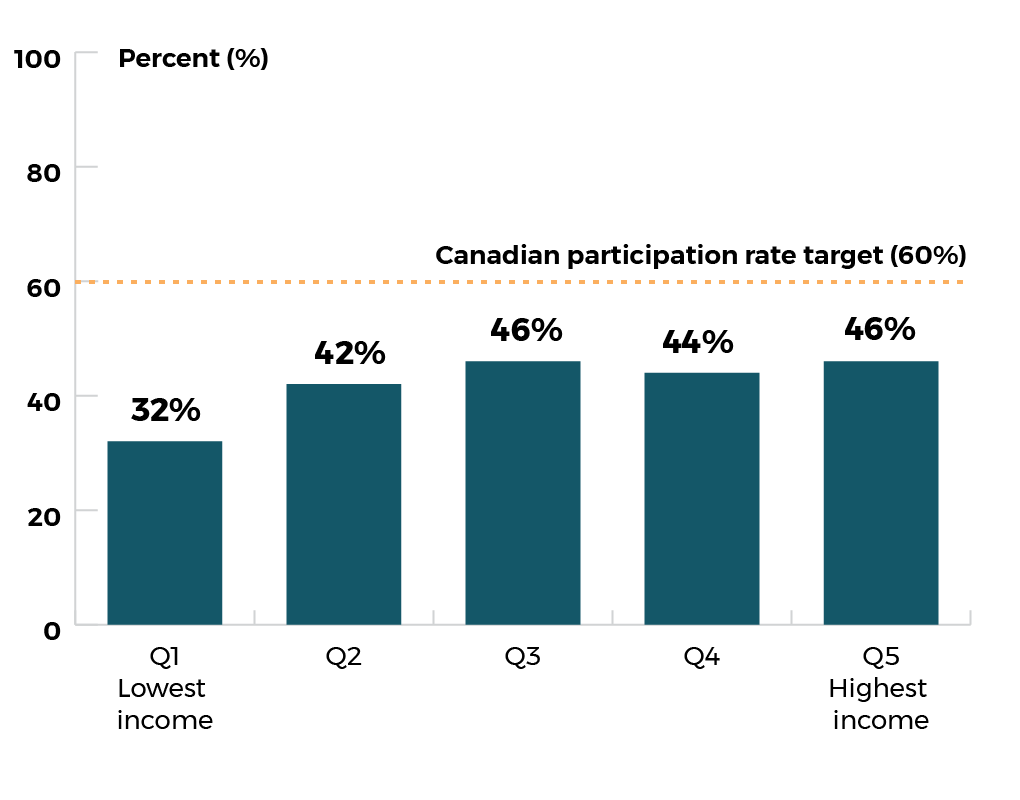
Data includes all 10 provinces.
Data source: Statistics Canada, Canadian Community Health Survey, 2017
Meeting the national screening rate target across all income quintiles could avoid 250 cases of colorectal cancer and prevent 130 deaths each year. Half of the prevented deaths would be among the lowest two income quintiles.
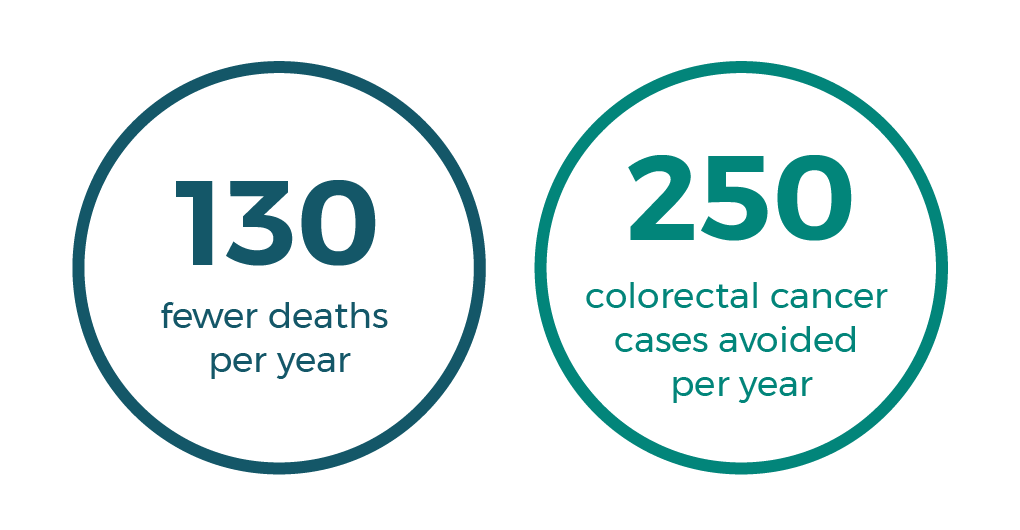
Immigration
Immigrants from the Caribbean and Latin America have the highest screening rates—higher even than Canadian-born individuals. Those from the Middle East, Western Asia and North Africa have the lowest rates.
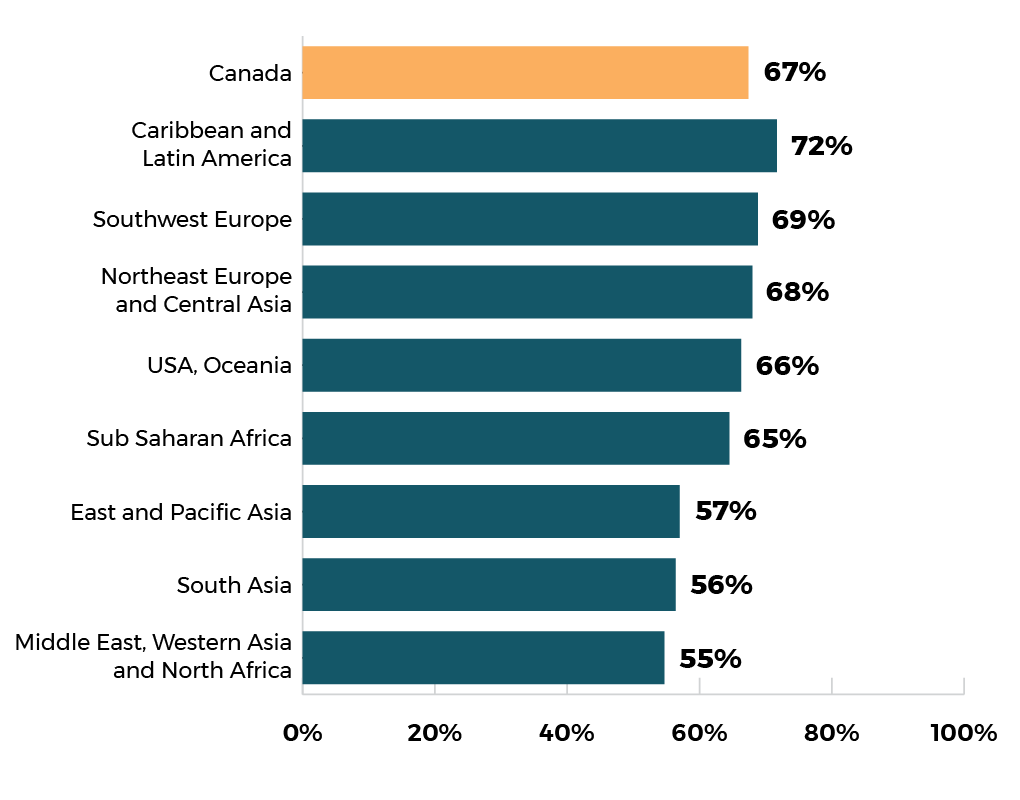
Note: Small sample sizes mean this data should be interpreted with caution.
Data includes all 10 provinces.
Data source: Statistics Canada, Canadian Community Health Survey, 2017
Nearly two-thirds of recent immigrants said they hadn’t been tested because they didn’t know the test existed or was needed.

People who speak primarily English and/or French at home have higher screening rates than those who speak Indigenous or other languages.
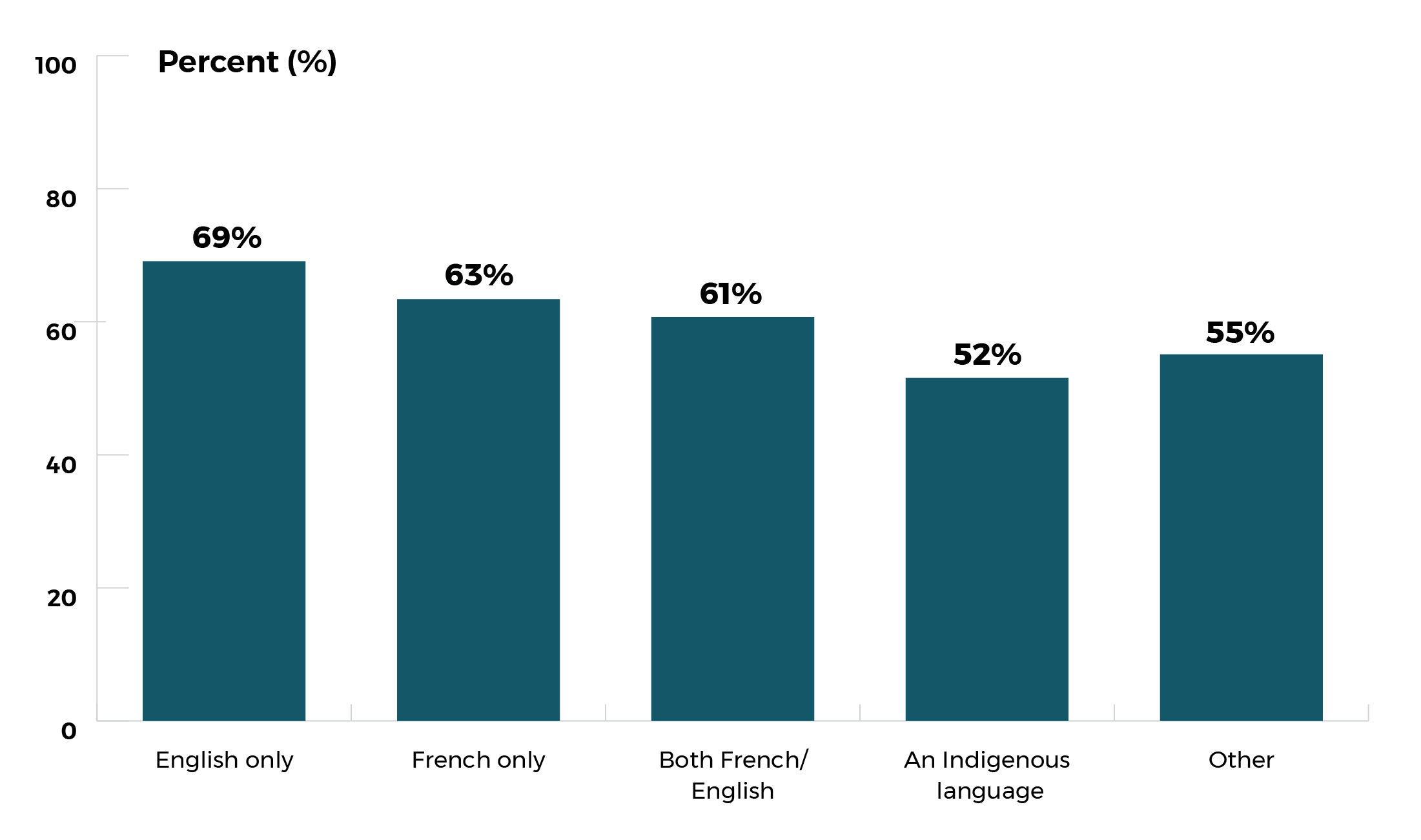
*Interpret with caution owing to large variable in the estimates
Data includes all 10 provinces.
Data source: Statistics Canada, Canadian Community Health Survey, 2017
Geography
Although screening rates are not significantly different between urban and rural/remote areas, the incidence of colorectal cancer is 13% higher among people living in rural and remote areas.

Data source: Colorectal cancers diagnosed in 2016 from the Canadian Cancer Registry
Health status
Screening rates increase with the number of chronic conditions. Screening rates among people with three or more chronic conditions are nearly 20% higher than in those with no chronic conditions.
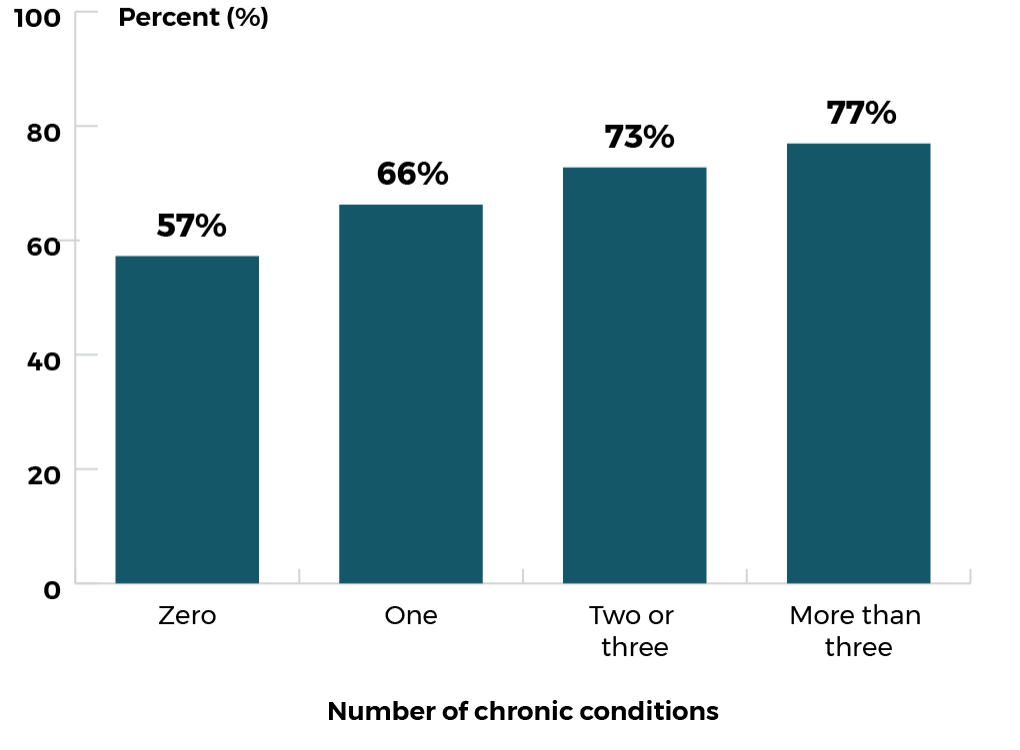
Data includes all 10 provinces.
Data source: Statistics Canada, Canadian Community Health Survey, 2017
People with mental illness may be less likely to get screened for colorectal cancer. For example, in the US, screening rates among people with a mental illness are 20-30% lower than the rates of the general population.
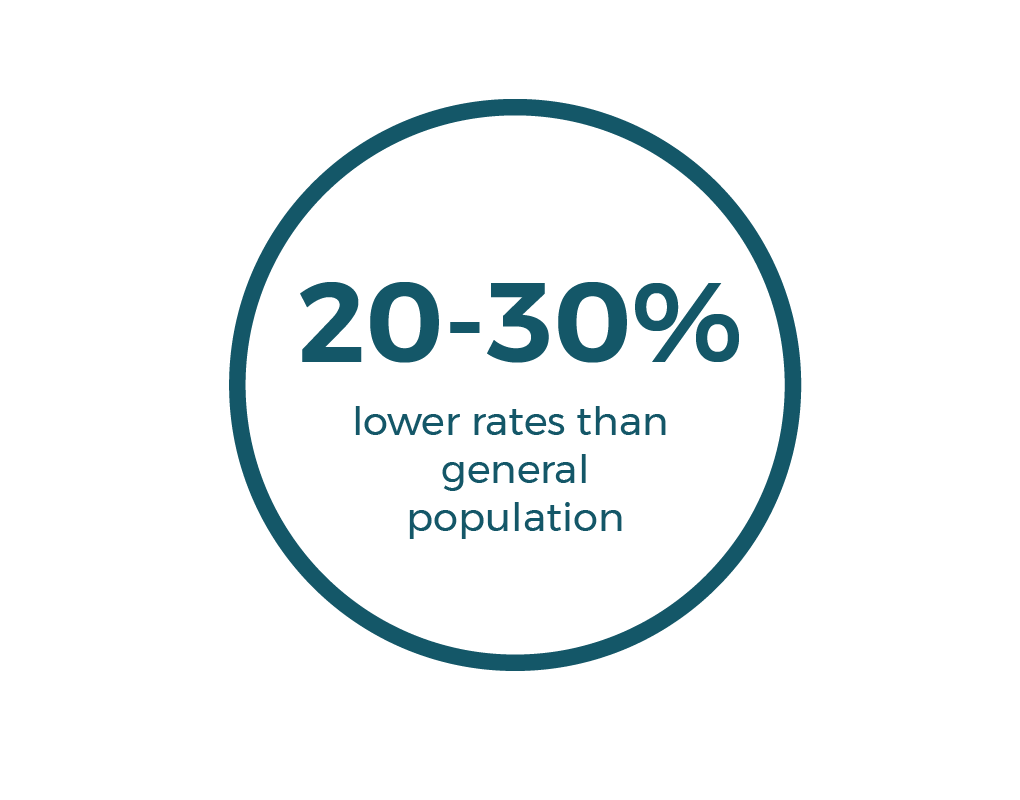
People with hearing or memory loss are more up to date in their screening than people without these disabilities.
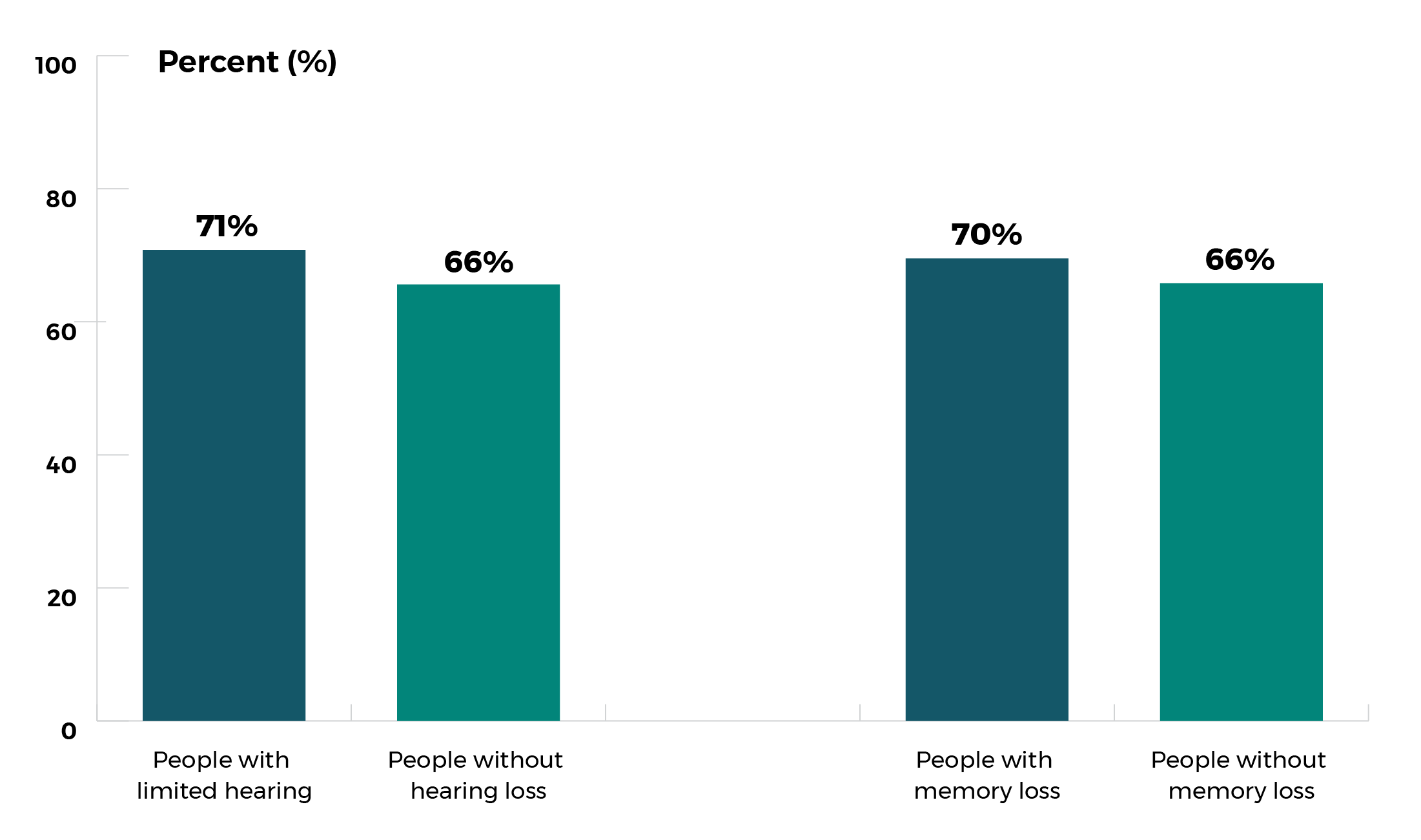
Data source: Statistics Canada, Canadian Community Health Survey, 2017
- Downloads
- Full report (pdf)
